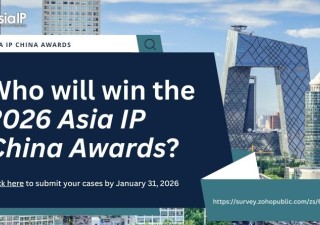Case Summary: Starbucks Corporation v. Morinaga Nyugyo Kabushiki Kaisha [2017] SGIPOS 18
29 November 2017
![Case Summary: Starbucks Corporation v. Morinaga Nyugyo Kabushiki Kaisha [2017] SGIPOS 18](https://asiaiplaw.com/img/no-image-x-large.png)
At its heart, this dispute brings two interesting issues to the fore. First, can an opponent take issue with a competitor’s mark on the basis of a similar colour scheme and layout? To what extent should trademark law extend its reach, without stifling free competition between traders? The second issue turns on whether use of geographical reference(s) in a mark results in "public deception." With increased globalization and free movement of goods across borders, many businesses boast global operations; it is not uncommon for entrepreneurs and businesses alike to draw inspiration from foreign places, cultures and lifestyles. But what are the limits to importing foreign influences or indicators in a business?
Morinaga Nyugyo Kabushiki Kaisha (the Applicant) applied to register the trademark .jpg) (the Application Mark) on October 23, 2013 in respect of goods in Classes 29 and 30, including, among others, milk, milk products, milk beverages, coffee, and coffee beverages. The Applicant is a Japanese manufacturer of dairy products, and has been using this trade mark in Japan in respect of coffee and coffee-based beverages for more than 20 years.
(the Application Mark) on October 23, 2013 in respect of goods in Classes 29 and 30, including, among others, milk, milk products, milk beverages, coffee, and coffee beverages. The Applicant is a Japanese manufacturer of dairy products, and has been using this trade mark in Japan in respect of coffee and coffee-based beverages for more than 20 years.
Starbucks Corporation (the Opponent), one of the largest roasters and retailers of specialty coffee in the world, opposed the registration of the Application Mark under Section 8(2)(b), Section 8(4)(b)(i), Section 8(4)(b)(ii), Section 8(7)(a), Section 7(4)(b), and Section 7(6) of the Trade Marks Act (Cap 332, 2005 Rev Ed) (the Act). The opposition was based on the Opponent's earlier mark registrations, including the following opponent's marks.
.jpg)
.jpg)
Underpinning the decision on the relative grounds of refusal was the IP Adjudicator's finding that the parties' respective marks were dissimilar. Noting that the test for similarity under the Section 8(2)(b) and 8(4)(b) limbs is the same, the IP Adjudicator rejected the Opponent's arguments that the green-black-white colour scheme and the layout of the marks within a concentric circle device rendered the marks similar. Instead, the dominant textual and figurative elements in the respective marks sufficiently and substantially outweighed any common denominator (which in this case is alleged to be the concentric circles, layout and colour scheme) between the parties' respective marks.
The ground under Section 8(7)(a) (i.e. passing off) failed as well, as the IP Adjudicator was not convinced that the colour scheme or the concentric circle device were in themselves distinctive identifiers of the Opponent's goods. Instead, she found that the distinctiveness of the Opponent's Marks resided in the depiction of the marks as a whole, which included the textual (STARBUCKS) element and/or the mermaid device – both of which are very different from the Opponent's Marks which contained the words "Mt. Rainier" with a depiction of a mountain device - so that there can be no misrepresentation.
As a further ground of opposition, the Opponent forcefully argued that the mark should be refused registration as it was of such a nature as to deceive the public as to the geographical origin of the goods, and would contravene Section 7(4)(b). After reviewing the legal authorities, the IP Adjudicator concluded that the threshold for deception was a relatively high threshold - there must be a "real tangible danger of confusion" and not just simply whether the public would "cause to wonder"; it had to be determined whether the connection between the place referenced and the goods was fairly obvious to the public so as to engender a literal association between the geographical reference and the goods concerned, or whether the connection was less compelling such that the geographical reference would be perceived as merely fanciful. The Opponent contended that the Application Mark made a "direct reference" to Seattle, which the Opponent argued had a strong reputation for its coffee culture and coffee houses so as to create an expectation amongst consumers that the goods were produced or manufactured in Seattle. However, the IP Adjudicator found that the Application Mark communicated "Mt. RAINIER" as the geographical reference, and not Seattle – which when used in the context of the statement "The Mountain of Seattle", as it appears in the Application Mark - is purely informative and points to Mt Rainier as the mountain in Seattle. It does not bring to mind Seattle as such. Since no evidence had been tendered to show a connection between Mt. Rainier and coffee or coffee beverages for that matter, the IP Adjudicator held that the relevant consumer would likely regard the reference to "Mt RAINIER" as a fanciful reference overall, rather than an indication of (deceptive) origin.
Finally, the ground of opposition under Section 7(6) (bad faith) also failed as the IP Adjudicator found that the Applicant's act of drawing cultural inspiration from Mt. Rainier did not fall short of commercially acceptable practices.






